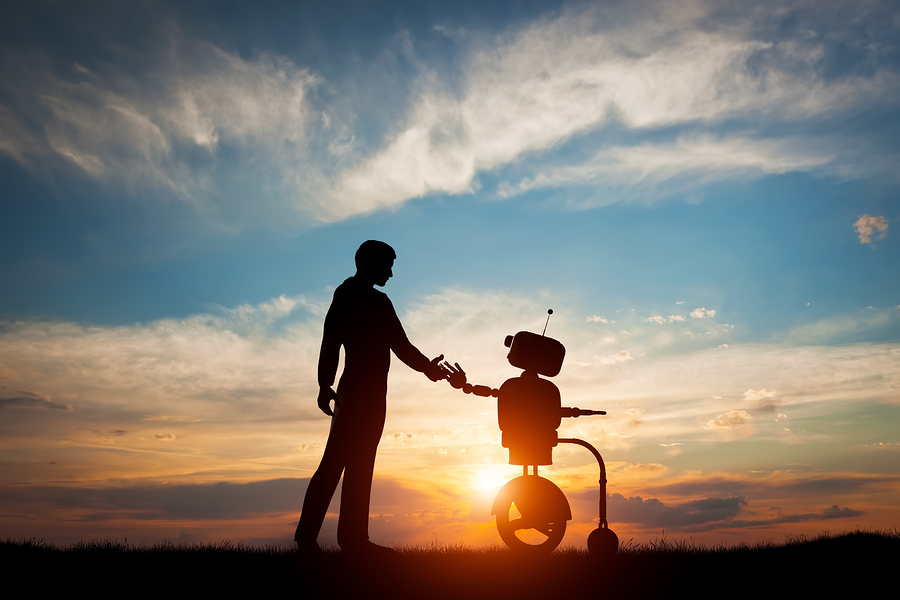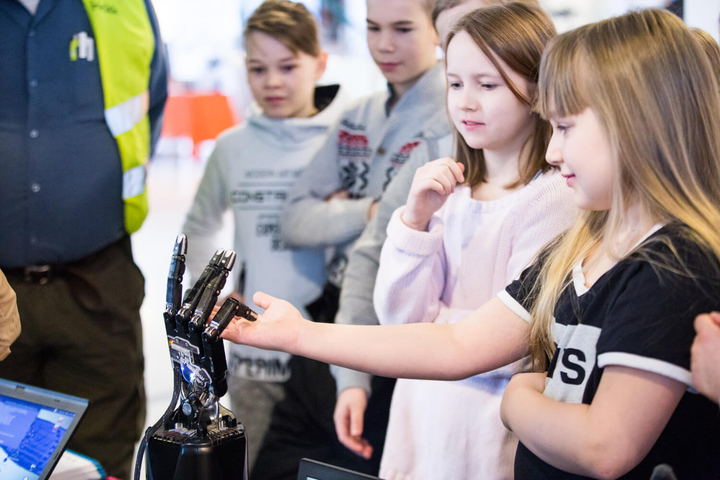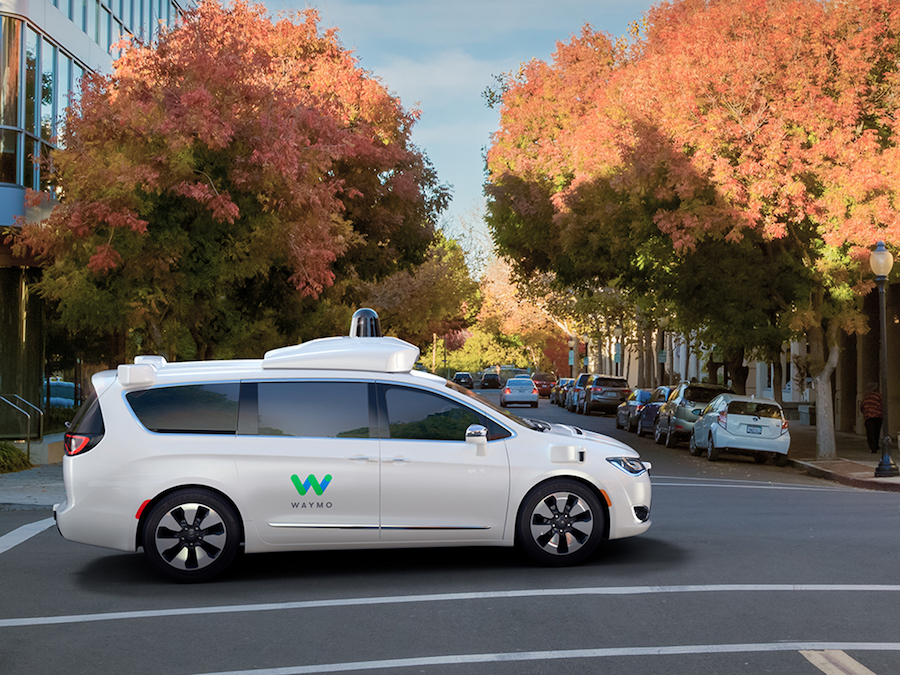Robotel: Japan hotel staffed by robot dinosaurs
International Manufacturing Technology Show
Smart Robotics: Revolution Is Motto, Efficiency Is Aim
Robot butlers are coming to this downtown hotel. Is Miami ready for robo-room service?
Rodney Brooks on the future of robotics and AI

If you follow the robotics community on the twittersphere, you’ll have noticed that Rodney Brooks is publishing a series of essays on the future of robotics and AI which has been gathering wide attention.
His articles are designed to be read as stand alone essays, and in any order. Robohub will be featuring links to the articles as they come out. They are worth the read.
Steps Toward Super Intelligence IV, Things to Work on Now published on July 15, 2018.
Steps Toward Super Intelligence III, Hard Things Today published on July 15, 2018.
Steps Toward Super Intelligence II, Beyond the Turing Test published on July 15, 2018.
Steps Toward Super Intelligence I, How We Got Here published on July 15, 2018.
Bothersome Bystanders and Self Driving Cars published July 4, 2018
The Origins of “Artificial Intelligence” published April 27, 2018
Time Traveling Refugees published March 17, 2018
The Productivity Gain: Where Is It Coming From And Where Is It Going To? published February 25, 2018
My Dated Predictions published January 1, 2018
AI/ML Is Not Uniquely Powerful Enough To Need Controlling published on December 23, 2017
What If There Were Men On The Moon Today? published December 18, 2017
The Seven Deadly Sins of Predicting the Future of AI published on September 7, 2017.
Domo Arigato Mr. Roboto published on August 28, 2017.
Machine Learning Explained published on August 28, 2017.
Robots and jobs

Will a robot take my job?
Media headlines often speculate about robots taking our jobs. We’re told robots will replace swaths of workers from taxi drivers to caregivers. While some believe this will lead to a utopian future where humans live a life of leisure provided for by robots, the dystopian view sees automation as a risk to the very fabric of society. Such hopes and fears have preceded the introduction of new technologies for centuries – the Luddites for example destroyed weaving machines in the 19th century to protest the automation of their sector. What we see, time and time again, is that technology drives productivity and wealth, which translates to more and better jobs down the line. But can we expect the same to happen with robots, or is this time different?
What do the numbers say?
Studies looking at the impact of robots on the job market have contradictory findings. A paper released by the National Bureau of Economic Research concludes that every robot introduced between 1990 and 2007 coincided with the elimination of 6.2 jobs within the commute area and a slight drop in wages. The International Federation of Robotics however found that from 2010 to 2015, the US industry installed around 135,000 new industrial robots, mainly in the car industry. During this same period, the number of employees in the automotive sector increased by 230,000, which suggests a positive impact on jobs.
Examples of this can also be seen in Amazon warehouses where the introduction of more than 100,000 warehouse robots did not lead to a dip in human labor. In fact, Amazon has added 113,500 people to its company worldwide in the past year.
Other studies have tried to estimate the number of jobs that could be automated in the future, and there again, the numbers vary widely. An Oxford report from 2013 estimated that 47% of U.S. jobs were at risk of automation. The OECD however has said that “14% of jobs in developed countries were highly automatable, with a further 32% likely to experience significant changes to the way they were carried out.”
So which is it, do robots create or destroy jobs? The answer may be “it’s complicated”. Certain professions may disappear in a local community, while the overall number of jobs may increase globally. In any case, the nature of work will most likely change.
Robots perform tasks, not jobs
Most jobs require workers to have more than one skill. Building a fully automated solution would therefore require a robot that masters many different tasks. Making robots is hard however, so they tend to be highly specialised. Imagine all the tasks a cleaner can do, yet it took Dyson 12 years of research just to make a vacuum cleaning robot. The reality is that robots perform tasks, not jobs. It therefore makes sense to think of robots as tools that can be used by people in their workplace, ideally helping with the dull, dirty, or dangerous tasks and boosting productivity. This has spurred a new area of collaborative robots, or cobots, that are easy to work with. ColRobot for example is a European project focussed on building an integrated system for collaborative robotics.
Skills for the new economy
The jobs of today are different from the ones of tomorrow. There is a pressing need to train a new generation of roboticists. This workforce will need to be diverse to ensure the best tools are being built for everyone. Inspiring the future generation is the goal of the European Robotics Week, which hosts more than 1000 events all over Europe. Training is further needed at all levels from school for young children to graduate education programs. But not everyone needs to be a roboticist, being technology literate is the first step towards building environments where humans and robots can work together. And while robots help us with the menial tasks, we have a chance to be “more human”. A carebot won’t replace a caregiver, it will give the caregiver time to have a coffee with their patient. Ultimately, we have the opportunity to focus on the jobs we enjoy most. Creative sectors, and those requiring emotional intelligence and empathy will also be in high demand in the future.
Technology that benefits all
One risk with automation is that wealth is concentrated in the hands of those that design or have access to the technology. Such a winner-takesall scenario would lead to growing inequality between large technology companies and workers. Wages have also stagnated, even though productivity has increased, which is another marker of inequality. At the same time these technologies are becoming increasingly accessible, meaning that non-experts should feel empowered to use them in their own industries and lives. The European Union and individual European governments are actively preparing for a change in labour markets with dedicated commissions and reports, as well as ground work to ensure the robot revolution benefits all. Solutions discussed include taxing automation, providing for a universal basic income, or boosting education, research, and entrepreneurship.
This article is part of a series of briefing documents published on www.eu-robotics.net/sparc. This project has received funding from the European Union’s Horizon 2020 Programme under grant agreement n° 688441
Waymo’s left turns frustrate other drivers

This week’s hot story was again from Amir at The Information and there is even more detail in the author’s Twitter thread.
The short summary: Amir was able to find a fair number of Waymo’s neighbours in Chandler, Arizona who are getting frustrated by the over-cautious drive patterns of the Waymo vans. Several used the words, “I hate them.”
A lot of the problems involve over-hesitation at an unprotected left turn near the Waymo HQ. The car is just not certain when it can turn. There is also additional confirmation of what I reported earlier, that operation with no safety driver is still very rare, and on limited streets.
Unprotected turns, especially left ones, have always been one of the more challenging elements of day-to-day driving. You must contend with oncoming traffic and pedestrians who may be crossing as well. You may have to do this against traffic that is moving at high speed.
While I am generally not surprised that these intersections can be a problem, I am a little surprised they are one for Waymo. Waymo is the only operating car which features a steerable, high resolution long range LIDAR on board. This means it can see out 200m or more (in a narrower field of view.) This lets it get a good look at traffic coming at it in such situations. (Radar also sees such vehicles but with much less resolution.)
For Waymo, this is not a problem of sensors but one of being too timid. One reason they are operating in Phoenix is it’s a pretty easy area to be timid in. The instinct of all teams is to avoid early risks that lead to early accidents. That became even stronger in Arizona after the Uber fatality, which used up a lot of the public’s tolerance for such errors. As such, the “better safe than sorry” philosophy which was already present in Waymo and most teams has been strengthened.
The problem is, it needs to eventually be weakened. Timid drivers won’t make it in the real world. They won’t make it far at all in the non-tame places like Boston. Thus you look at a nasty trade-off:
- The more timid you are, the more problems you have and the more people driving behind you that you annoy.
- The less timid you are, the greater the risk of a mistake and an accident.
That leaves only a few options. The other drivers must adapt better to a timid driver, or the public must get more tolerant of a slightly higher (but still better than human) accident risk.
Hype around self-driving cars has pushed some into the public to expect computerized perfection. That’s not coming.
Changing how people react?
Believe it or not, it is not as impossible to change the behaviour of other drivers as you might think. In Manhattan not that may years ago, two things were very common. Endless honking, and gridlock. Both were the result of well ingrained aggressive habits of New York drivers. The city decided to crack down on both, and got aggressive with fines. It worked, and those things are both vastly reduced.
It’s less possible to adjust the patterns of pedestrians. Some recent articles have gotten a lot of attention from people suggesting this must happen. I think some of it will happen, but much less than hoped, and that will be the subject of another article.
A robocar should eventually get very good at driving decisions which involve physics, because computers are very good at physics. Unlike humans which have difficulty precisely timing when an oncoming car will get to them, robots could in theory do it with a very frightening precision, making turns through gaps that seem tiny to humans. This would frighten other drivers and cause problems, so it’s not something we’ll see today.
This isn’t the last story we’ll see of robocars frustrating other drivers. That’s particularly true if we unwisely keep them at the speed limit. My long term belief is that most of the traffic code should be eliminate for robocars and be replaced by, “it’s legal if you can do it safely and without unfairly impeding traffic.” The whole idea of a traffic code only makes sense for humans. With robots, since there will never be more than a few dozen different software stacks on the road, you can just get all the designers together in a room and work out what should be done and what is safe. Traffic codes and other laws are there to deal with humans who can’t be trusted to know the rules or even obey the rules they know. While companies can’t be trusted to do anything but look after their own interests, you can easily make it in their interests to follow the rules.
Rapid prototyping of the strider robot – smoother, stronger, faster
 This summer we used our Strider optimizer coupled with rapid prototyping in LEGO to refine its 10-bar linkage.
This summer we used our Strider optimizer coupled with rapid prototyping in LEGO to refine its 10-bar linkage.
In a tiny fraction of the time it took us to refine TrotBot’s linkage in our garage, we explored numerous variations of Strider’s linkage and their trade-offs, and were able to significantly improve its performance in these categories:
Gait Efficiency. To be energy efficient, walking gaits should be smooth and not cause the robot to rise and fall – think how much more tiring it is to do lunges than it is to simply walk. The feet should also move at constant speed – try walking while changing how quickly your feet sweep across the ground and your leg muscles will quickly complain! Strider Ver 3 was optimized for both of these features, and it’s the only mechanism that we’ve tested which can walk with a 1:1 gear ratio without the LEGO motors stalling:
Rugged Terrain. Like with TrotBot, we wanted Strider to be able to walk on rugged terrain, otherwise why not just use wheels? But, mechanical walkers are blind and dumb, and they can’t lift their feet to avoid tripping on obstacles. So we designed Strider’s foot-path to mimic how you would walk blindfolded on a path crisscrossed by roots: lift your feet high and keep them high until stepping back down to the ground, like this:
Here’s a rugged terrain test an 8-leg build:
Strength. Walkers stress frames more than wheeled vehicles, so we increased the frame’s rigidity with more triangles. Also, the leverage of long legs can put a tremendous amount of force on the leg’s joints, especially when turning them tank-style. We strengthened Strider’s leg joints by sandwiching them between beams like in the image below, which also reduces how quickly friction wears down the lips of the frictionless pins.
Here’s a test of Strider’s strength with a 10 pound load:
We made these changes while keeping Strider simple – it’s still our easiest walker to build. We also (hopefully) made our building instructions more clear. We learned how bad we are at creating building instructions from Ben’s experience teaching his walking robots class last spring. In the past when users would email us about something confusing in the instructions, we’d simply add more pictures to clarify things. This backfired in Ben’s class, since more build pictures resulted in the students getting more confused, and caused them to skim thru the pictures more quickly, and to make more mistakes. As we learned, less is more!
We also separated the leg and frame instructions to make it easier to build different versions of Strider, and we designed the frame to make it easy to swap between the battery box/IR controller, or the EV3 brick. You can find the instructions here. Here’s an example build with the EV3 brick mounted underneath – but it would probably work with the brick mounted on top as well.
For the bold, we also posted a half dozen new variations of the Strider linkage for you to try building here, along with an online optimizer for the even bolder to create their own versions of the Strider linkage. We’ve also optimized Klann’s and Strandbeest’s linkages for LEGO, and you can find their online optimizers here. (jeez, I guess we’ve been busy)
Here’s a final teaser to encourage you (or your students) to take on the challenging task of replacing wheels with mechanical legs: